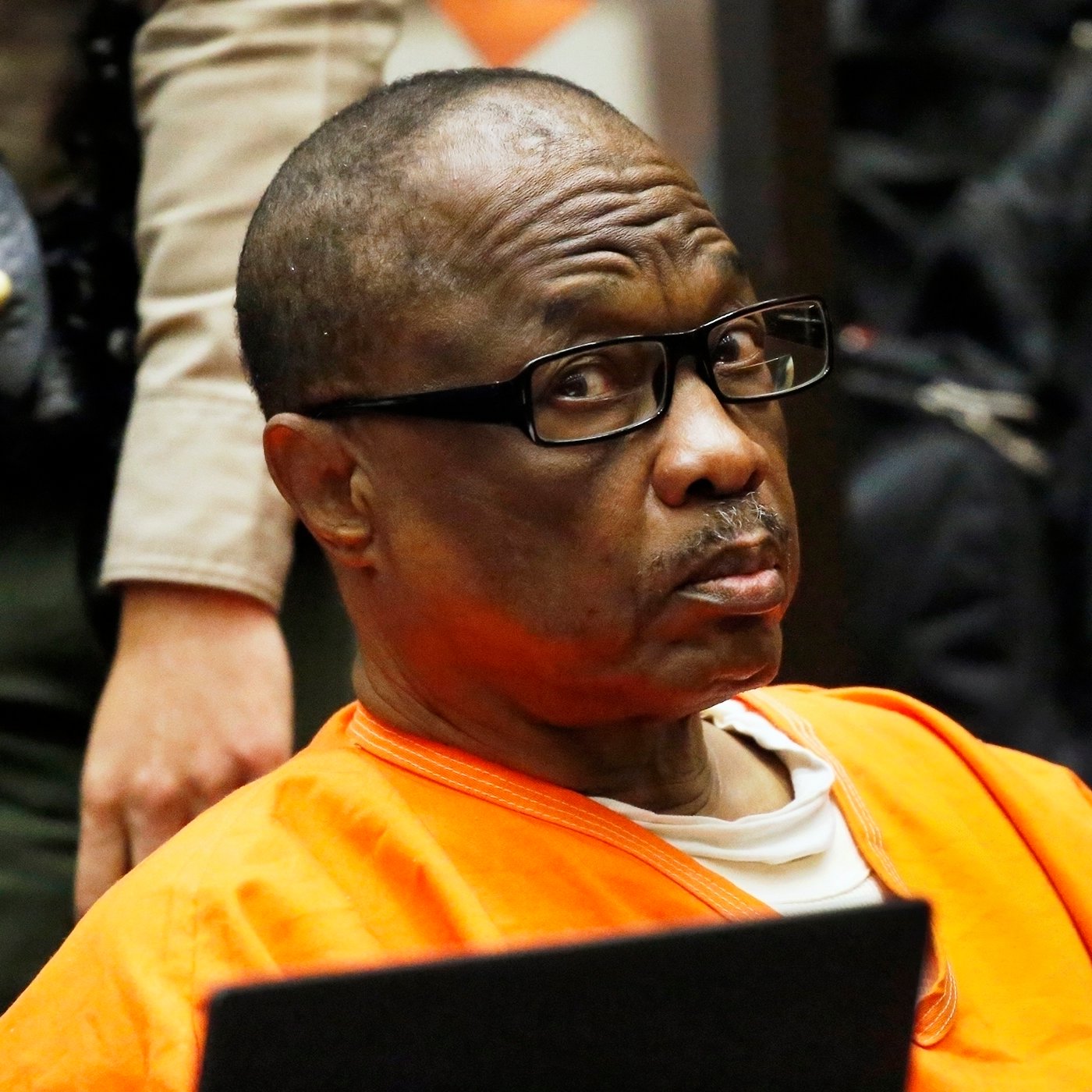The Grim Sleeper: How a Pizza Crust Ended 25 Years of Terror

He photographed his victims. He kept trophies. And for 14 years, he completely stopped killing, earning him one of the most unsettling nicknames in true crime history. The Grim Sleeper operated in South Central LA for over two decades, and when police finally caught him, it wasn't through traditional detective work. It was through a piece of leftover pizza and some seriously creative undercover work.
The Making of a Monster
Lonnie David Franklin Jr. entered this world on August 30, 1952, in South Central Los Angeles. From the outside, he seemed like any other kid growing up in the neighborhood. But by 1975, when he was 23 years old, Franklin's true nature revealed itself in the most horrific way possible.
While stationed in Stuttgart, Germany with the Army, Franklin and two other servicemen approached a 17-year-old girl asking for directions. They offered her a ride home. The moment she got in that car, they held a knife to her throat and drove her to an isolated field where they gang-raped her.
Here's the thing that makes this even more disturbing: during the attack, this young woman kept her wits about her in the most extraordinary way. She pretended to be interested in Franklin, and he actually gave her his phone number. When she reported the crime, police used that number to track him down. Franklin and his accomplices had also photographed the assault, foreshadowing the documentation obsession that would define his later crimes.
Franklin received a dishonorable discharge for this conviction, but the pattern was already established: violence against women, documentation of his crimes, and an ability to present himself as trustworthy right up until the moment he wasn't.
The Southside Slayer Era Begins
Back in Los Angeles during the mid-1980s, women in South Central started disappearing and turning up dead. The LAPD eventually connected the dots and realized they had a serial killer on their hands, someone systematically targeting Black women who were sex workers and drug users. They called him the Southside Slayer.
In the community, these murders had another name: the Strawberry Murders. "Strawberry" was street slang for women who traded sex for drugs, and someone was hunting them with methodical precision.
Between 1983 and late 1985, at least thirteen women were stabbed and strangled. The killer used a .25 caliber handgun for some of the murders, and by 1987, seven victims were definitively linked to that same weapon.
When Justice Depends on Your ZIP Code
Here's where this story gets really infuriating. Community leaders noticed something that should have been obvious to everyone: when Richard Ramirez, the Night Stalker, was terrorizing upscale areas of LA and San Francisco, the LAPD threw massive resources at catching him. Task forces, press conferences, the whole nine yards.
But when poor Black women were being systematically murdered in South Central? Crickets.
The criticism was so intense that the LAPD finally formed the Southside Slayer Task Force and increased the reward from $10,000 to $25,000. By January 1986, fifteen murders had been linked to the case. But here's the problem: when you're playing catch-up instead of getting ahead of a serial killer, the results speak for themselves.
The task force wound down later that year, partly because they theorized that maybe up to four different killers were responsible for all these murders. Over the next few years, they did solve some of the Southside Slayer cases, connecting them to other killers operating in the area. But those seven murders committed with the same .25 caliber handgun? Those remained unsolved.
The Grim Sleeper's Confirmed Timeline
Franklin's first confirmed victim was Debra Jackson in August 1985. What made Franklin different from other serial killers was what happened next: after his last known crime in 1988, he apparently stopped killing for 14 years.
This hiatus wasn't unusual behavior for Franklin. Remember, this is someone who had already demonstrated the ability to compartmentalize violence. He lived a relatively normal life in South Central, working various jobs, maintaining relationships. His neighbors described him as friendly, helpful, the kind of guy who would lend you tools or help with car repairs.
But in 2002, Franklin resumed killing. This 14-year gap is what earned him the nickname "The Grim Sleeper," as if he'd been hibernating between murder sprees.
The Break That Changed Everything
Fast-forward to May 2007. Janecia Peters was murdered, and this time, investigators got lucky. DNA evidence from her case matched at least eleven unsolved murders in LA. The LAPD secretly formed a new task force, and in 2008, they announced a $500,000 reward for information leading to the killer's capture.
They had a new name for him now: The Grim Sleeper.
In March 2009, they caught another break. The sole survivor of a Grim Sleeper attack came forward with a description: a Black man in his early 30s, neat appearance, kind of geeky-looking, wearing a black polo shirt tucked into khakis. She also provided details about his vehicle.
The Family Connection
Police labs couldn't find a direct DNA match in their database, but they found something almost as good: similar DNA belonging to Christopher Franklin, who was obviously too young to be their killer. Christopher was Lonnie Franklin's son.
This is where the story gets really clever. Instead of approaching Franklin directly and potentially spooking him, investigators decided to get creative. They needed his DNA to make a definitive match, but they needed it obtained legally and without his knowledge.
The Pizza Crust Operation
An undercover officer posed as a waiter at a restaurant where Franklin was eating pizza. Franklin didn't finish his crust, and investigators collected it after he left. That discarded pizza crust provided the DNA sample that definitively linked Lonnie Franklin to the Grim Sleeper murders.
On July 7, 2010, Franklin was arrested at his home on West 81st Street in South Central Los Angeles. The investigation that followed revealed the full scope of his crimes.
The House of Horrors
When investigators searched Franklin's home, they discovered over 1,000 photographs and several hundred hours of video. The images showed mainly Black women across a wide age range, from teenagers to middle-aged and older women, often nude or in compromising positions. Many appeared unconscious.
These photographs dated back 30 years, providing a visual timeline of Franklin's criminal activities. Police believe he took most of these pictures himself, documenting both conscious and unconscious victims.
The Interrogation
During questioning, investigators laid out photo after photo of victims that DNA evidence linked to Franklin. He denied knowing any of them. But as the interview continued, Franklin's mask began to slip. He started insulting the victims, revealing the contempt he held for the women whose lives he had taken.
The most disturbing moment came when investigators mentioned DNA evidence. Franklin responded with a phrase that still makes investigators cringe: "DNA juice." It was a callous, almost dismissive reference to the scientific evidence that would ultimately convict him.
The Trial and Conviction
Franklin was charged with ten murders and one attempted murder and held without bail. His trial began in February 2016, after numerous delays. The prosecution presented overwhelming DNA evidence, survivor testimony, and the disturbing collection of photographs found in his home.
On May 5, 2016, after nearly three months of trial and a day and a half of jury deliberation, Franklin was convicted on all counts. The jury had seen enough evidence to conclude that this unassuming South Central resident was responsible for one of Los Angeles' most prolonged serial killing sprees.
One month later, he was sentenced to death.
The End of the Grim Sleeper
On March 28, 2020, Lonnie Franklin was found unresponsive in his cell at San Quentin State Prison at approximately 7:20 p.m. He was pronounced dead at 7:43 p.m. An autopsy was ordered to determine the cause of death, but there were no signs of trauma. Franklin died of natural causes while on death row, taking whatever additional secrets he might have held to his grave.
The Lasting Questions
Investigators believe there were additional victims during Franklin's supposed 14-year hiatus. The sheer volume of photographs and videos found in his home suggests his criminal activity never truly stopped, even if the murders did.
Four additional women were identified as likely Grim Sleeper victims: Sharon Alicia Dismuke, Inez Warren, Georgia Mae Thompson, and Rolenia Morris, whose body was never found. Prosecutors didn't charge Franklin with these murders to avoid further trial delays, but the evidence suggests his victim count was higher than the ten confirmed cases.
The Grim Sleeper case represents both the best and worst of criminal justice. It shows how advances in DNA technology and creative police work can solve seemingly impossible cases. But it also highlights how systemic neglect of vulnerable communities can allow predators to operate unchecked for decades.
Franklin's death closed a chapter on one of Los Angeles' most disturbing criminal cases, but it also left families with unanswered questions about loved ones who might have crossed paths with the Grim Sleeper during his 25-year reign of terror in South Central Los Angeles.
The pizza crust that finally brought down Lonnie Franklin serves as a reminder that sometimes justice comes from the most unexpected places, and that persistence in the face of seemingly insurmountable odds can eventually pay off, even if it takes decades to get there.
















